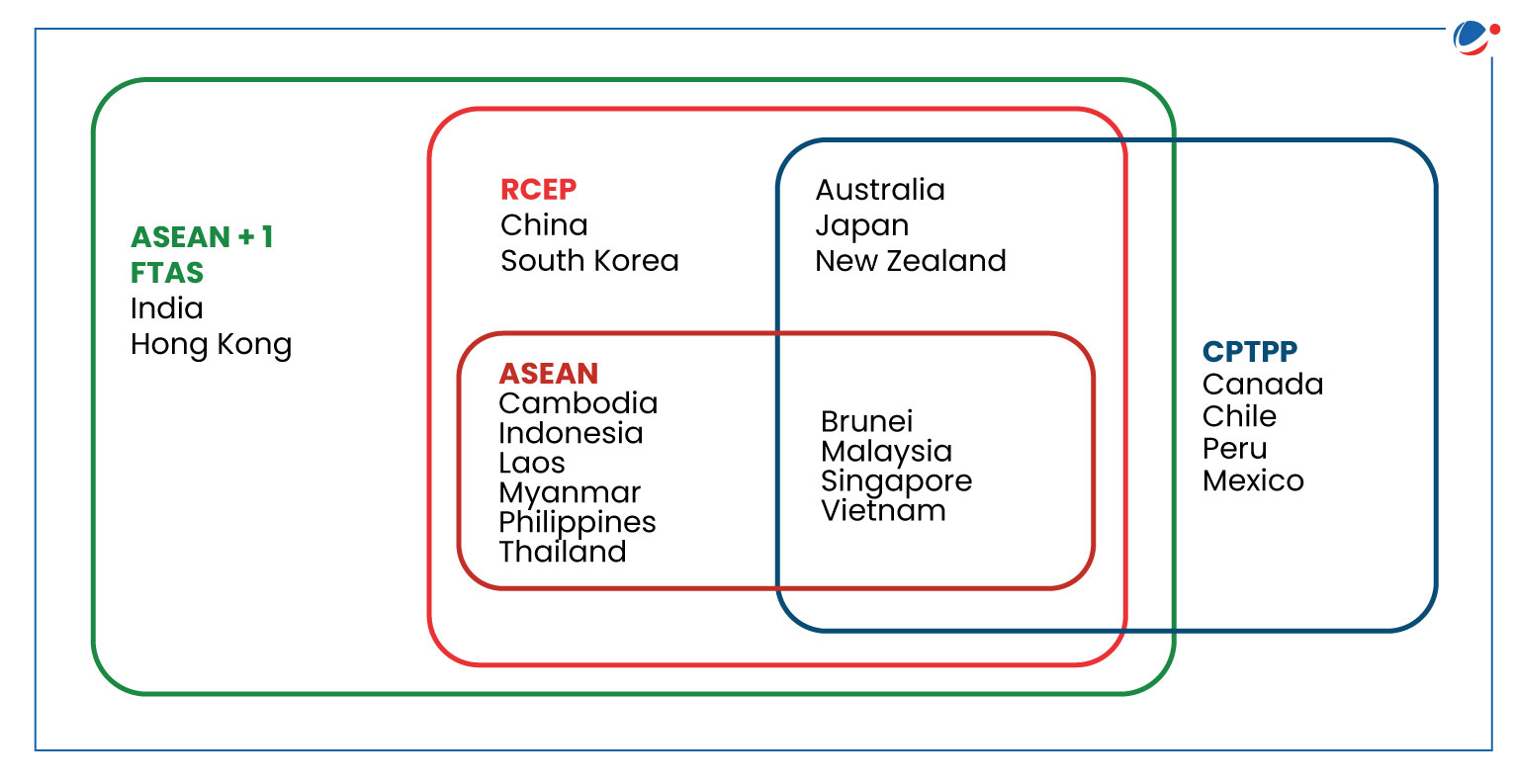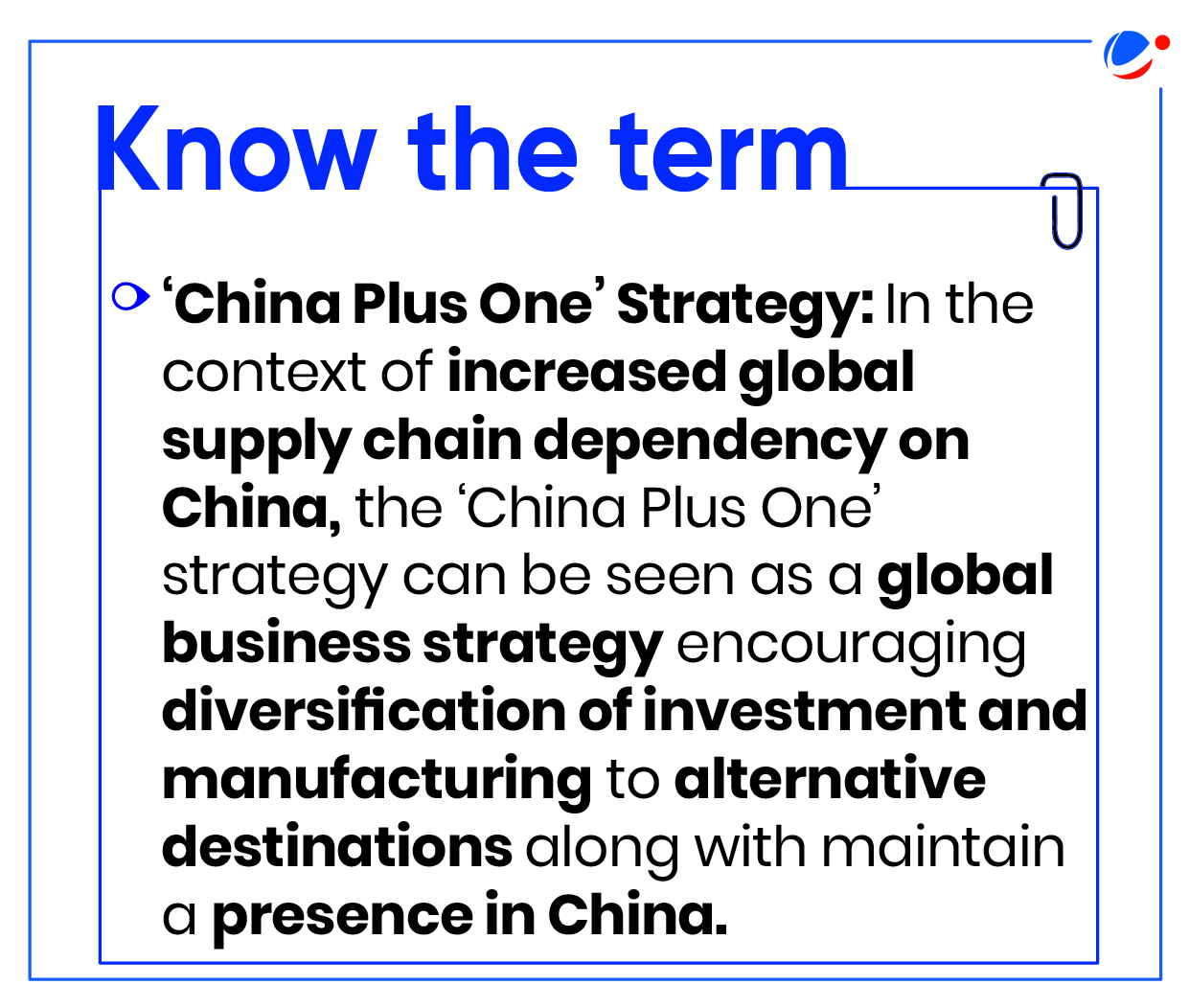Why in the news?
Recently, the NITI Aayog CEO suggested that India should be a part of the large trade agreements, the Regional Comprehensive Economic Partnership (RCEP) and Comprehensive and Progressive Agreement for Trans-Pacific Partnership (CPTPP).
More on the news
- The World Bank India Development Update suggested reforms to reduce trade costs, lower trade barriers and re-strategizing participation in FTAs like the RCEP.
- FTA is an agreement between two or more countries where they agree on certain obligations that affect trade in goods and services, and protections for investors and intellectual property rights, among other topics.
- On the contrary, the Global Trade Research Initiative (GTRI) negated the World Bank's suggestions for India to reconsider joining RCEP.
About Regional Comprehensive Economic Partnership (RCEP)
About Comprehensive and Progressive Agreement for Trans-Pacific Partnership (CPTPP)
|
Significance of involvement in large trade agreements
- Integration into Global Value Chain: Inclusion into large trade blocs can potentially improve supply chain development and expansion and economic integration for India.

- E.g. It may aid in easy imports of capital goods and inputs required to develop the indigenous industry.
- Benefit the MSME Sector: Regional FTAs may benefit the MSMEs, which contribute nearly 40% of India's exports.
- The trade blocs can serve as a vibrant export market for realizing the manufacturing potential of Indian companies.
- Trade Competitiveness: With tariffs at par with potential competitors of India like the ASEAN countries, India can benefit from attracting private investment and capitalizing on the 'China Plus One' strategy used by companies to diversify supply chains.
- This will attract more Foreign Direct Investment (FDI) inflows, increase employment opportunities and business prospects in India.
- An independent study found that upon joining the RCEP, the Indian economy could gain up to USD 60 billion by 2030.
- Strategic relevance: Inclusion in the trade blocs provides opportunities to influence institutional policies of regional trade like trade liberalization, free movement of people, e-commerce etc.
- E.g. RCEP is in line with the objectives of India's Act East Policy while CPTPP can improve India's engagement in the Indo-Pacific region.
Challenges
- Trade imbalance: RCEP's gains are disproportionately skewed toward China, which risks worsening the huge trade deficit of India with China (USD 85 billion in FY2024).
- E.g. ASEAN's trade deficit with Chinagrew sharply from USD 81.7 billion in 2020 to USD 135.6 billion in 2023.
- Marginal benefits: India already has robust free trade agreements (FTAs) with 13 out of 15 RCEP members, excluding New Zealand and China.
- Divergent approaches: The trade agreements diverge with India's approach in areas like taxation measures, Investor-State Dispute Settlement (ISDS), binding investor protection provisions etc.
- E.g. Principle like Most Favoured Nations (MFN) was not included in the 2015 Model Bilateral Investment Treaty (BIT).
- Stringent Competition: Regional FTAs will make cheap imports easier due to tariff reduction and pose unfair competition to various Indian industries. E.g. Dairy industry.
- Hinder indigenous enterprise: Stringent provisions of the agreements will hinder the development of indigenous entrepreneurship and manufacturing ecosystem due to limitations posed by the provisions.
- E.g. provisions related to working conditions of labour, environmental protection etc.
Way forward
- Revisiting FTAs and Deliberation: There needs to be thorough discussion and deliberation inclusive of all stakeholders on the cost-benefit analysis of joining the large trade agreements.
- Improving trade competitiveness: Working on measures like the reduction of non-tariff barriers and trade diversification will aid in improving India's integration with the Global Value Chain.
- Continued negotiations: India needs to keep negotiating for favourable terms in the trade agreements.
- Prioritize long-term goals: The goals of Atmanirbhar Bharat, transforming into a global manufacturing hub and upholding the principle of strategic autonomy need to be prioritized in decision-making about joining the large trade agreements.
Conclusion
India's growth trajectory has been sui generis. While trade forms a major aspect of economic growth, any form of integration, including binding terms in the global trade agreements, needs to be analysed considering the net benefits accrued by India from the arrangements. As global powers encourage India to join these large trade agreements, India needs to decide based on rational and pragmatic analysis.



